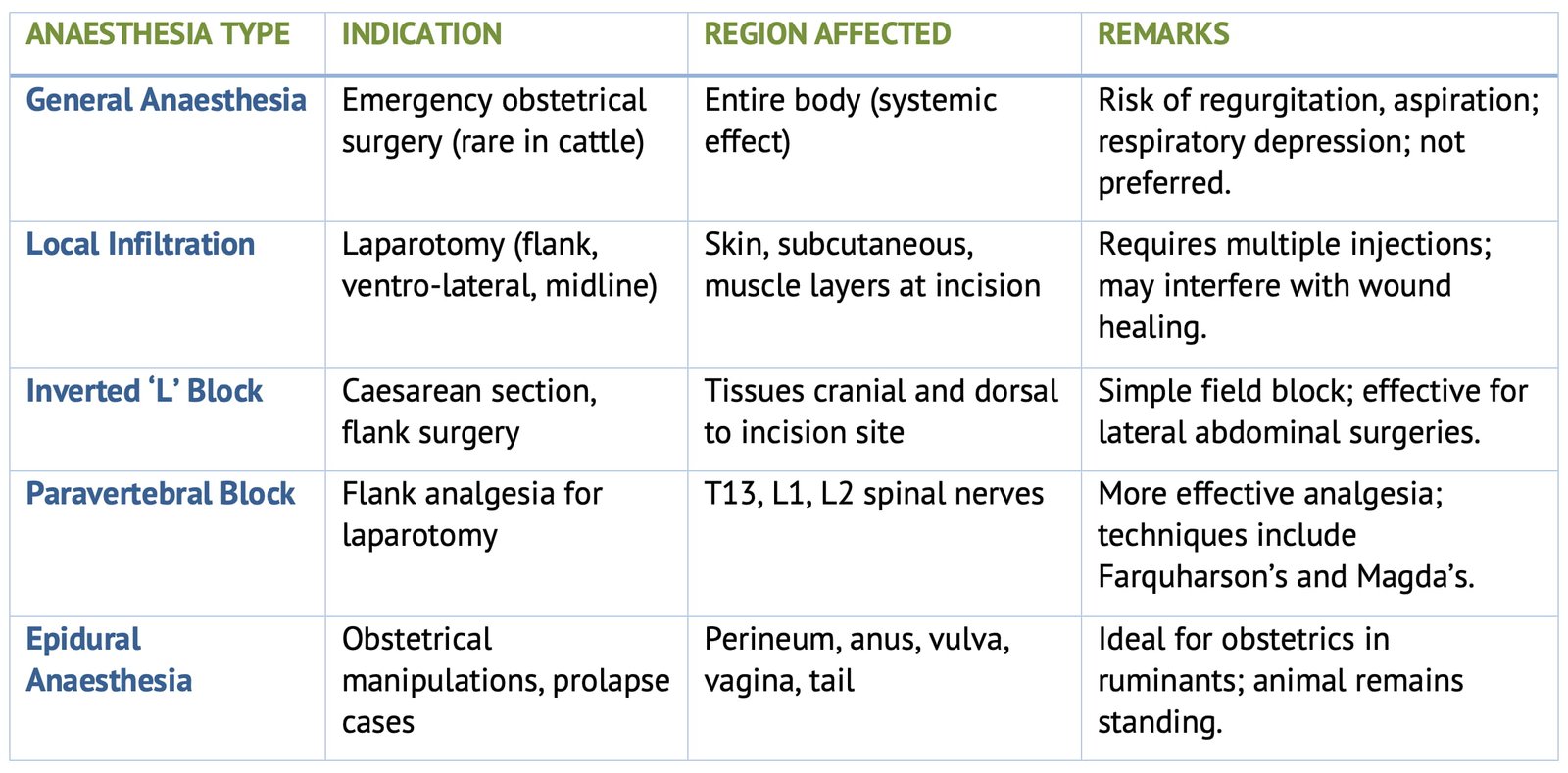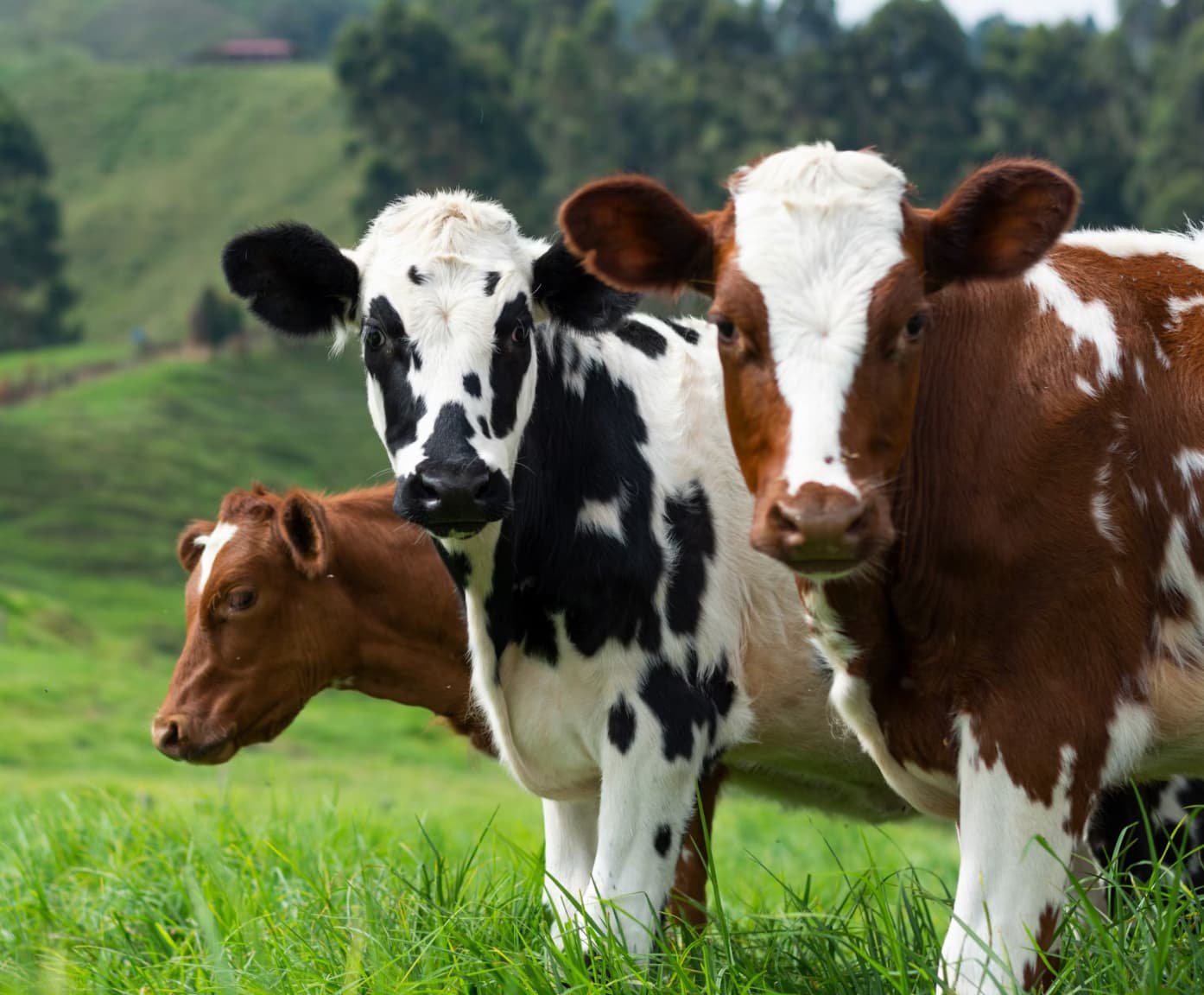TABLE OF CONTENTS
Obstetrical Anaesthesia in Animals
Obstetrical anaesthesia in animals is used to manage pain and facilitate safe handling during difficult deliveries or obstetrical interventions, such as cesarean sections, fetotomy, or manual corrections of dystocia.
In order to achieve a safe and humane delivery in some types of dystocia, the induction of local, regional, or general anaesthesia in the dam is essential.

General Anaesthesia
General anaesthesia is seldom used in cattle because of the difficulties associated with the control of rumen function during surgery. Since most obstetrical operations are performed in emergency situations, the patients cannot be effectively starved prior to surgery. When a cow is restrained in lateral or dorsal recumbency, intra-abdominal pressure increases considerably.
This pressure is transmitted to the diaphragm and causes respiratory embarrassment in addition to the depression already caused by the anaesthetic.
The accumulation of gases and relaxation of the full rumen increase the danger of regurgitation and aspiration of ruminal contents.
Local Infiltration Anaesthesia
Local infiltration anaesthesia may be used for all forms of laparotomy, including flank, ventro-lateral, and ventral midline approaches.
Multiple subcutaneous injections of a local anaesthetic solution (2% lignocaine HCl) are given along the line of incision at 1–2 cm intervals, followed by infiltration of the muscle layers. This produces analgesia at the site of injection. However, it requires more anaesthetic solution and often results in incomplete analgesia. Furthermore, it may hinder wound healing.
Inverted ‘L’ Block
The Inverted ‘L’ block method may be applied in the form of an inverted ‘L’ for caesarean operations in the flank region and can be modified to suit the ventro-lateral or ventral midline approach.
Paravertebral Nerve Block
Paravertebral nerve block is produced by perineural injection of 2% lignocaine around the thirteenth thoracic and the first to third lumbar spinal nerves, near the site of their emergence from the intervertebral spaces and before they divide into dorsal and ventral branches.
There are two methods of performing a paravertebral nerve block:
- Farquharson’s Method
- Magda’s method
1. Farquharson’s Method
The spinal nerves blocked in Farquharson’s Method are T13, L1, and L2.
The last rib is prepared, and a point is marked 5 cm lateral to the midline, between the 13th rib and the first lumbar transverse process. A 16 or 18 gauge needle is inserted perpendicularly at this point (at a 90-degree angle) until it perforates the intertransverse ligament.
A syringe containing 20 ml of anaesthetic agent is then attached. 15 ml of the solution are deposited at this site, and the remaining 5 ml is injected while withdrawing the needle.
Similarly, the points between the transverse processes of L1 and L2, and L2 and L3, are located, and 20 ml of the agent is injected at each site. The duration of analgesia in the paralumbar fossa and flank area is approximately 2 hours.
2. Magda’s method
The spinal nerves blocked in Magda’s method are T13, L1, and L2.
The sites of injection are the dorsal and ventral areas of the L1, L2, and L3 transverse processes.
A spinal needle is passed dorsal to the L1 transverse process toward the midline, and about 10 ml of anaesthetic solution is injected while the needle is gradually withdrawn.
Next, the needle is passed just ventral to the transverse process toward the midline, and another 10 ml of anaesthetic solution is injected while withdrawing the needle.
A similar procedure is repeated at the L2 and L3 transverse processes. The duration of analgesia is approximately 2 hours.
Epidural Anaesthesia
In ruminants, epidural anaesthesia is ideal for obstetrical purposes.
It is a form of multiple spinal nerve block in which, by means of a single injection of a local anaesthetic solution into the epidural space, the coccygeal and posterior sacral nerves are affected. This produces anaesthesia of the anus, perineum, vulva, and vagina.

